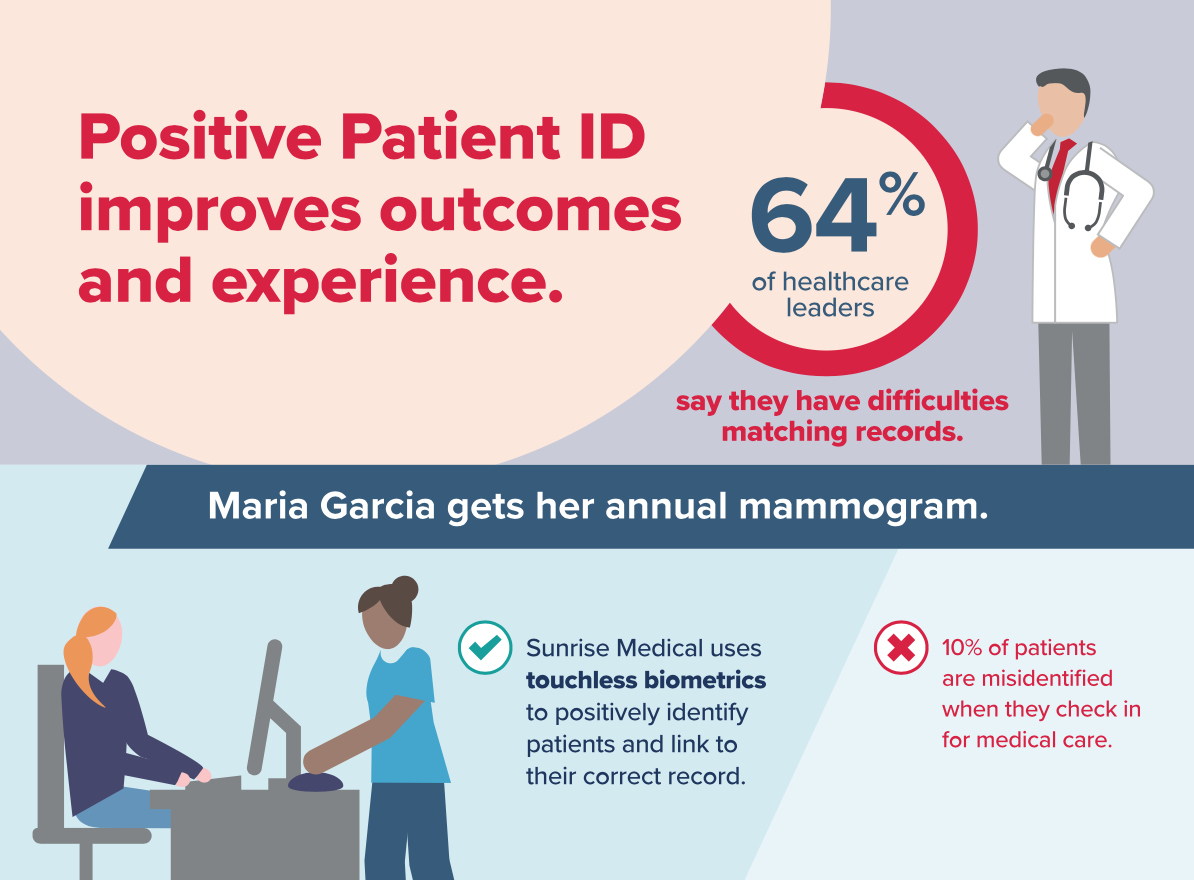4 steps to overcome patient misidentification
Patient misidentification is a problem that continues to plague healthcare organizations, but these steps help to make sure your HDO isn’t one of them.
As if healthcare organizations don’t have enough to worry about, here’s one more thing: patient misidentification. In order to provide the very best care to patients, care providers must first make sure that they know everything about that patient, and in fact that the patient before them is actually who they believe them to be. Patient misidentification cases are, unfortunately, not as infrequent as we’d hope.
The risks of failing to positively identify patients are real, and many.
- When patient misidentification occurs, medical errors happen
- Duplicate medical records occur when a single patient is associated with more than one medical record, often as a result of patient misidentification
- Hospitals lose revenue when patients are misidentified – revenue cycles are affected, and, frequently, claims are denied
That’s why overcoming patient misidentification needs to be a top priority for your organization. The good news? There are biometric patient identification methods that can create that critical one-to-one match between individuals and their unique medical records, easing the challenges presented by patient identity management.
Ready to start? Consider these steps to overcome patient misidentification.
Step 1: Make sure your executive team knows about the patient identification problem – and that you can help solve it.
Positive patient identification is the foundation of effective healthcare, but hospitals may take it for granted that patients are always being correctly identified. Be open about the possible problem, and make your case for why you need to overcome patient misidentification. But know your audience. These title-specific briefs about why patient identification matters can give you a head start.
Step 2: Find a robust patient identification solution that works for you.
The right patient identification solution should improve patient safety, protect against identity theft and fraud, and optimize the patient experience. And in a world still defined by a pandemic, where people may still be hesitant about touching things, making sure your solution is touchless is key, too.
Step 3: Optimize the patient registration and patient check-in experience.
A successful patient experience strategy starts with positive patient identification – including optimization of registration and check-in workflows. Leading patient identification technologies will seamlessly integrate with self-service kiosks – preventing the risk of PHI being overhead – and EHRs, further optimizing workflows for all involved.
Step 4: Share your success with positive patient identification.
A successful program to combat patient misidentification helps your organization capture revenue, keep PHI safe and secure, and increases patient loyalty. Make sure to celebrate your wins! The more people using the system you’ve put in place, the more value you’ll see.
Learn more about improving patient outcomes and experience
Check out this infographic to learn how patient identification helps improve outcomes and experience.

